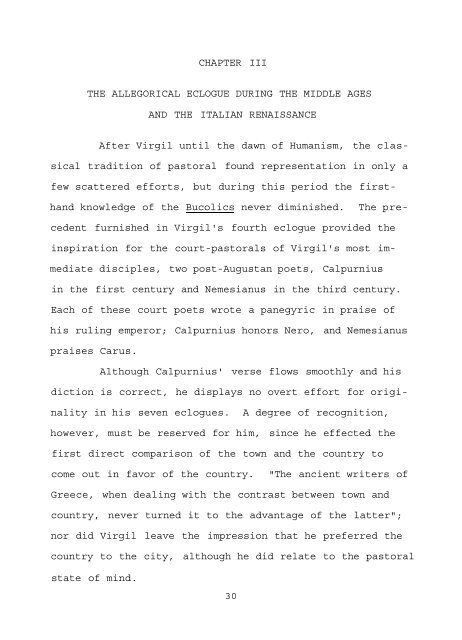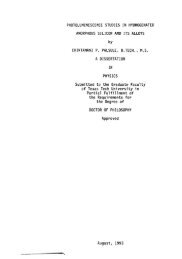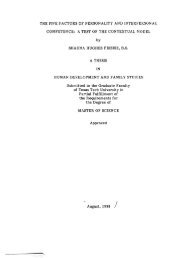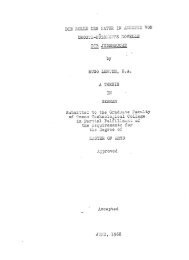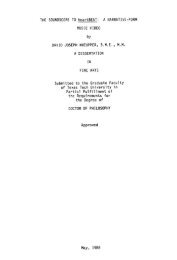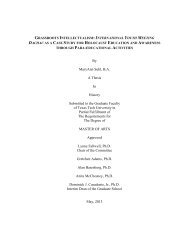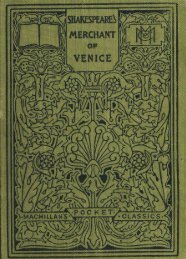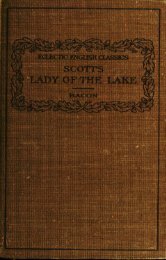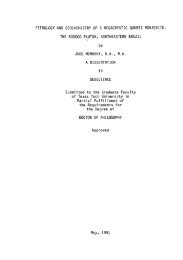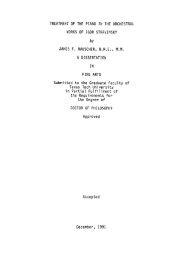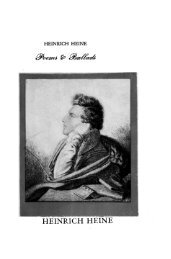THE EVOLUTION OF ALLEGORY IN THE PASTORAL ... - Repositories
THE EVOLUTION OF ALLEGORY IN THE PASTORAL ... - Repositories
THE EVOLUTION OF ALLEGORY IN THE PASTORAL ... - Repositories
You also want an ePaper? Increase the reach of your titles
YUMPU automatically turns print PDFs into web optimized ePapers that Google loves.
CHAPTER III<br />
<strong>THE</strong> ALLEGORICAL ECLOGUE DUR<strong>IN</strong>G <strong>THE</strong> MIDDLE AGES<br />
AND <strong>THE</strong> ITALIAN RENAISSANCE<br />
After Virgil until the dawn of Humanism, the classical<br />
tradition of pastoral found representation in only a<br />
few scattered efforts, but during this period the firsthand<br />
knowledge of the Bucolics never diminished.<br />
The precedent<br />
furnished in Virgil's fourth eclogue provided the<br />
inspiration for the court-pastorals of Virgil's most immediate<br />
disciples, two post-Augustan poets, Calpurnius<br />
in the first century and Nemesianus in the third century.<br />
Each of these court poets wrote a panegyric in praise of<br />
his ruling emperor; Calpurnius honors Nero, and Nemesianus<br />
praises Carus.<br />
Although Calpurnius' verse flows smoothly and his<br />
diction is correct, he displays no overt effort for originality<br />
in his seven eclogues.<br />
A degree of recognition,<br />
however, must be reserved for him, since he effected the<br />
first direct comparison of the town and the country to<br />
come out in favor of the country.<br />
"The ancient writers of<br />
Greece, when dealing with the contrast between town and<br />
country, never turned it to the advantage of the latter";<br />
nor did Virgil leave the impression that he preferred the<br />
country to the city, although he did relate to the pastoral<br />
state of mind.<br />
30


